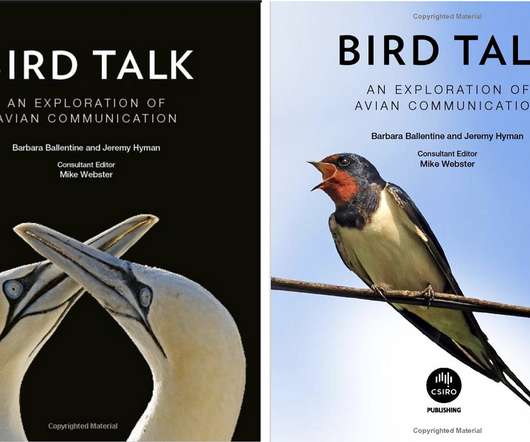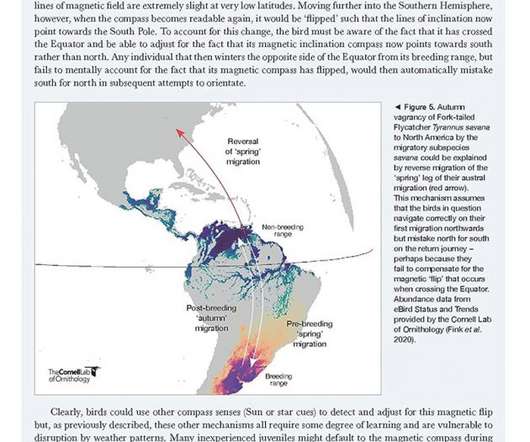Bird Talk: An Exploration of Avian Communication–A Book Review
10,000 Birds
AUGUST 3, 2021
And summary and discussion of recent research on how birds have changed the frequency and pitch of their songs in response to human noise and the possible consequences of those changes (again, we know that we don’t know). I do wish there was more about research on female bird song. And, that’s it.





















Let's personalize your content